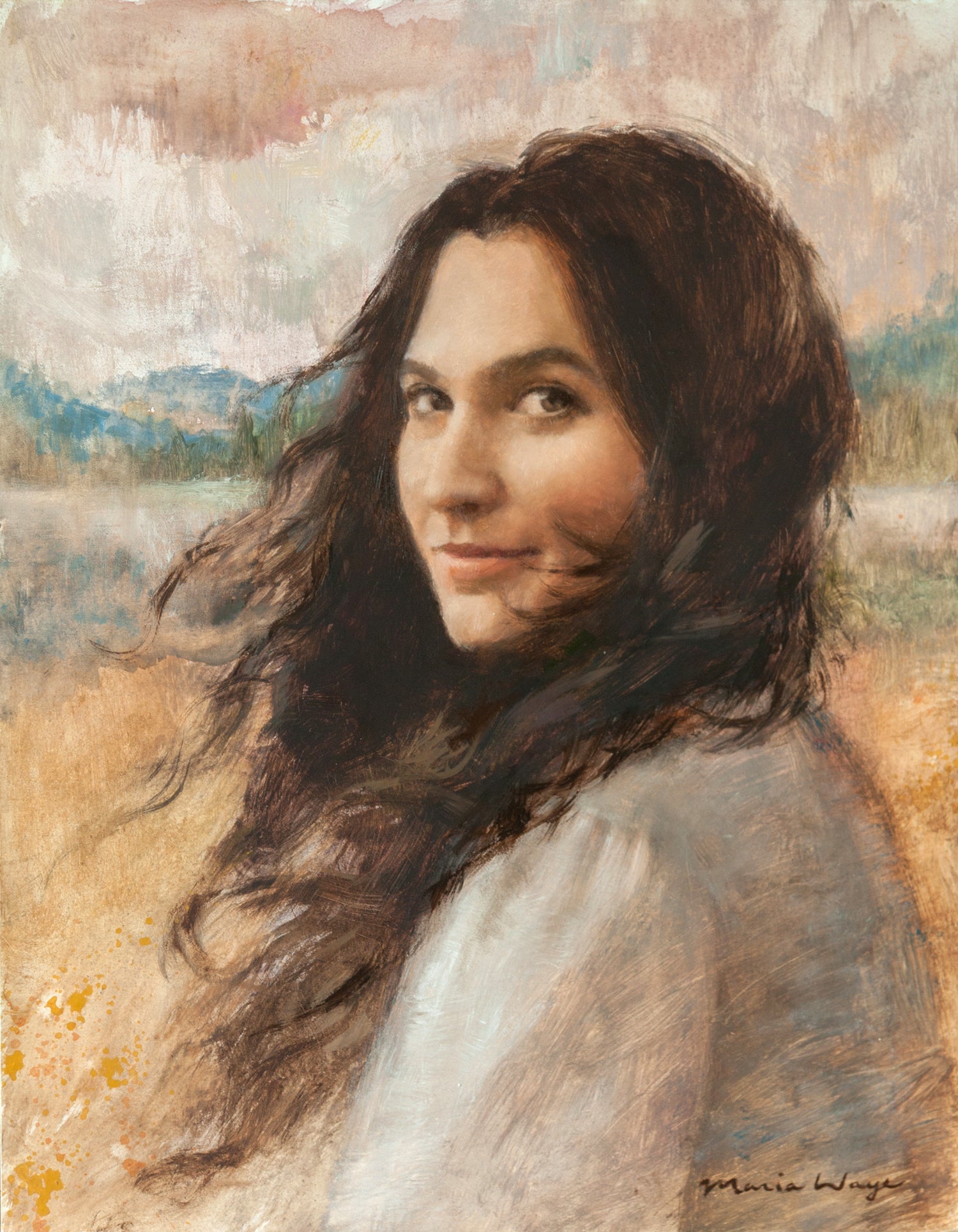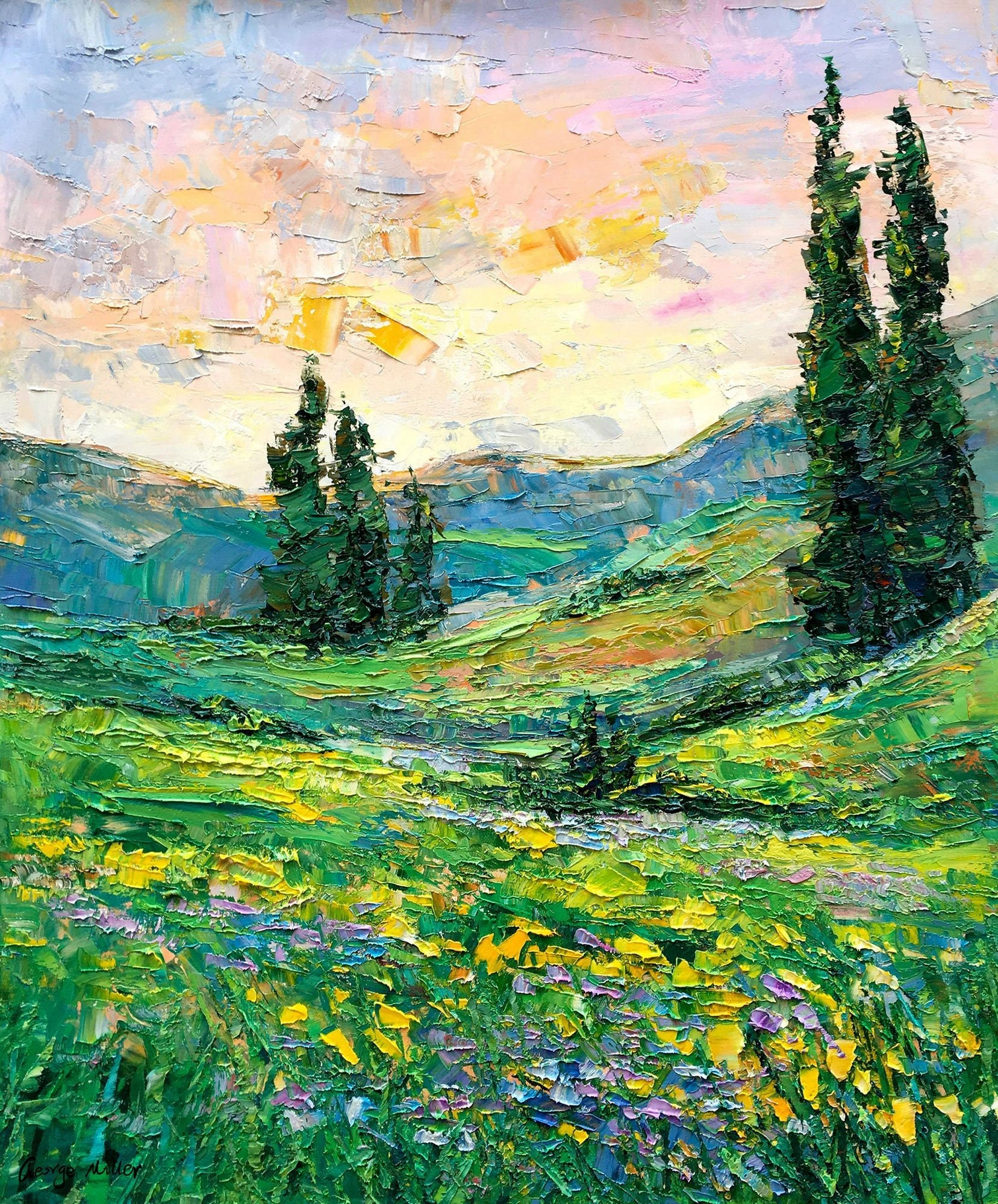Modern and Abstract Oil Paintings for Sale
Modern and Abstract Oil Paintings for Sale
Blog Article
Discovering Everything About Oil Paintings: An Overview to Recognizing Their Elegance and Worth
Oil paints have astounded audiences for centuries, providing a look into the artistic mastery of various periods. Their abundant history is linked with ingenious methods and extensive emotional expression. Understanding the products and methods behind these artworks can boost gratitude. Furthermore, the marketplace for oil paintings offers opportunities for collectors and capitalists alike. As one explores this remarkable world, the question occurs: what makes an oil paint genuinely useful?
The Background of Oil Paint: A Trip Via Time
Oil paint has roots that date back to old times, it absolutely prospered throughout the Renaissance, when artists discovered its versatility and abundant shade capacity. Early instances can be traced to the 7th century, with strategies developing notably across cultures. The medium became prominent in Northern Europe in the 15th century, particularly through the jobs of artists like Jan van Eyck, who spearheaded its usage for in-depth realistic look and lively colors. This period noted a departure from tempera paints, allowing for greater depth and structure. As oil paint spread, it influenced many artists, resulting in masterpieces by popular numbers such as Leonardo da Vinci and Rembrandt. The medium's legacy proceeds, forming the art globe well right into modern-day times.
Comprehending Oil Repaints: Materials and Techniques
As musicians explore the world of oil paints, they run into a diverse selection of materials and methods that specify this medium. The main parts of oil paint consist of pigments, which provide shade, and drying out oils, such as linseed, that bind the pigments and assist in application. Various additives can modify the paint's structure and drying time, enhancing convenience. Techniques like glazing, where clear layers are accumulated, and impasto, which entails applying thick paint, permit different visual results. Furthermore, using brushes, palette blades, and even fingers can create special appearances and surfaces. Understanding these materials and methods allows artists to fully express their creative thinking and accomplish the wanted effect in their artwork.
The Duty of Color in Oil Paintings
Shade plays a critical duty in oil paints, influencing both aesthetic appeal and psychological vibration. Understanding shade concept basics, consisting of the partnerships between shades, can boost an artist's ability to communicate state of mind and atmosphere. Furthermore, mastering color mixing strategies enables higher deepness and splendor in a painting's combination.

Shade Theory Essential
Comprehending color concept is important for artists dealing with oil paints, as it forms the foundation for creating visually appealing and unified structures. Color theory incorporates the study of exactly how shades interact, the color wheel, and the connections in between key, secondary, and tertiary colors. Artists make use of corresponding shades to boost contrasts and create prime focus, while similar shades advertise unity and cohesiveness within an item. In addition, the principles of warm and amazing colors influence the perception of depth and space in a painting. Comprehending these concepts permits artists to manipulate shade efficiently, guiding the viewer's eye and connecting their designated message. Proficiency of color theory ultimately enriches an artist's ability to convey emotions and concepts through their work.
Emotional Effect of Color
The emotional influence of shade in oil paints plays a critical role in just how customers perceive and link with art work. Colors evoke certain sensations and moods, affecting the audience's mood. As an example, warm hues like oranges and reds can produce a sense of warmth and energy, while cool tones such as blues and eco-friendlies commonly evoke calmness or self-contemplation. Artists purposefully choose shade schemes to improve narrative elements, assisting the audience's psychological journey. The saturation and contrast of colors further amplify these effects, drawing interest and producing focus. Ultimately, the interplay of shades in oil paintings not only enhances their aesthetic appeal yet also works as an effective tool for emotional expression, improving the visitor's experience and interpretation.
Color Mixing Techniques
While lots of elements of oil paint add to the total structure, understanding color blending strategies is essential for accomplishing wanted effects and depth. Color mixing can be approached with numerous approaches, including the subtractive and additive procedures. Additive mixing involves incorporating colors of light, while subtractive blending counts on pigments, where colors blend to create brand-new shades. Artists often use a minimal combination to create harmonious jobs, understanding the connections between primary, secondary, and tertiary colors. Methods such as glazing and scumbling better improve depth and luminance. By skillfully mixing shades, a musician can stimulate feelings, produce centerpieces, and attain a sense of realism, inevitably elevating the paint's psychological and aesthetic impact.
Famous Oil Painters and Their Iconic Functions

Famous for their proficiency of color and method, oil painters have created several of one of the most renowned artworks in background. Renowned artists like Vincent van Gogh astounded audiences with his stirring brushwork in "Starry Night," while Claude Monet's "Perception, Sunup" laid the groundwork for Impressionism. Leonardo da Vinci's "Mona Lisa" remains an enduring sign of imaginative genius, showcasing his skill in recording human expression. On the other hand, Rembrandt's "The Night Watch" illustrates his ingenious usage of light and shadow. Other remarkable numbers include Pablo Picasso, who reinvented modern art with his bold testing in works like "Les Demoiselles d'Avignon," and Georgia O'Keeffe, whose vivid depictions of landscapes and blossoms assisted specify American innovation. Each artist's special style added significantly to the oil paint landscape.
Exactly how to Examine the Quality of an Oil Painting
Examining the high quality of an oil paint entails a mindful analysis of craftsmanship methods, in addition to an analysis of shade and composition. Observing brushwork, layering, and the application of paint can reveal the musician's ability level. Furthermore, the interplay of shades and the total plan of aspects add considerably to the paint's aesthetic value.
Examining Workmanship Methods
A meticulous evaluation of craftsmanship strategies is crucial for determining the top quality of an oil painting. Critics need to initially take a look at the application of paint; thick, textured brushstrokes might recommend a competent hand, while overly consistent applications can indicate an absence of depth. oil paintings for sale. The layering method is also essential; the presence of glazes and varied thickness can enhance luminance and complexity. Furthermore, the top quality of the products made use of, such as the canvas and pigments, plays a substantial function in resilience and overall visual. Attention to detail in elements like edges and changes between colors mirrors the musician's commitment to their craft. Eventually, these techniques add to the painting's psychological effect and market value, acting as indicators of the musician's skill and intent
Assessing Shade and Structure
While examining the quality of an oil painting, one have to concentrate on the interaction of color and structure, as these aspects are basic to the artwork's overall effect. Color choices can establish and stimulate feelings state of mind; as a result, the musician's scheme should be examined for harmony and comparison. A well-balanced make-up directs the customer's eye and produces a feeling of unity. Musicians usually employ strategies like the regulation of thirds or leading lines to enhance aesthetic rate of interest. Furthermore, the usage of light and darkness can include depth, improving the three-dimensionality of the paint. Ultimately, an effective oil paint weds color and structure, engaging the audience and inviting a much deeper admiration of the artist's vision and technique.
Taking care of and Preserving Oil Paintings
Proper care and conservation of oil paintings is vital for preserving their integrity and long life. To safeguard these art work, it is crucial to present them far from direct sunshine, which can create fading and discoloration. Maintaining a stable setting with controlled temperature level and humidity additional help in avoiding damage. Cleaning up ought to be done gently making use of a soft, completely dry cloth, preventing any type of extreme chemicals that might damage the paint or varnish. Regular evaluations for indications of wear and tear, such as cracking or flaking, are suggested. When storing or transporting oil paints, appropriate extra padding and framing are essential to prevent physical harm. Inevitably, thorough care contributes to the aesthetic allure and worth of oil paints over time.
The Marketplace for Oil Paintings: Accumulating and Spending
Understanding the marketplace dynamics for oil paints is important for enthusiasts and investors alike. The worth of these artworks is affected by numerous elements, consisting of the artist's reputation, historic relevance, and present patterns. Collectors frequently seek items that reverberate directly while taking into consideration possible recognition in worth. Galleries and auctions function as main venues for trading, with prices changing based upon need and rarity. Purchasing oil paintings requires study right into the marketplace, along with an understanding of credibility and provenance. Furthermore, arising musicians might use possibilities for substantial returns, while established names can command high prices. Overall, a tactical technique to collecting can produce both aesthetic enjoyment and financial incentives.

Regularly Asked Questions
What Are the Ecological Impacts of Oil Painting Products?
The environmental effects of oil painting products consist of the release of volatile natural compounds (VOCs), unsafe waste generation, and resource removal for pigments. These variables contribute to air pollution and eco-friendly destruction, increasing issues amongst environmentally aware musicians and consumers.
Exactly How Do Different Canvases Affect Oil Paint Outcomes?
Different canvases affect oil painting results considerably. Surface area, absorbency, and texture quality can alter paint application, drying out times, and shade vibrancy. Musicians often pick specific canvases to attain wanted effects and enhance their creative expression.
Can Oil Paintings Be Restored if Harmed?
If damaged, Oil paints can without a doubt be brought back. Professional conservators make use of various methods to repair tears, clean surfaces, and address staining, making more info sure that the artwork retains its initial beauty and value for future generations.
What Are the Indications of an Original Oil Painting?
The indications of an original oil painting consist of noticeable brush strokes, appearance variations, and an uneven canvas weave (oil paintings for sale). Furthermore, authenticity may be verified via provenance, trademarks, and the existence of a varnish layer one-of-a-kind to oil mediums
How Has Innovation Influenced Modern Oil Painting Techniques?
Innovation has considerably influenced modern oil paint strategies by presenting digital devices for preparation, improved materials for texture and long life, and online platforms for marketing and sharing art, thus increasing artists' innovative possibilities and target market get to. Oil painting has roots that date back to ancient times, it truly grew during the Renaissance, when artists discovered its adaptability and abundant color potential. The emotional impact of shade in oil paints plays a crucial role in how visitors connect and view with art work. While many elements of oil painting contribute to the total make-up, grasping color blending strategies is essential for accomplishing desired impacts and deepness. Assessing the quality of an oil painting involves a mindful assessment of craftsmanship methods, as well as an evaluation of shade and make-up. While evaluating the top quality of an oil paint, one have to concentrate on the interaction of shade and make-up, as these elements are fundamental to the art work's overall influence.
Report this page